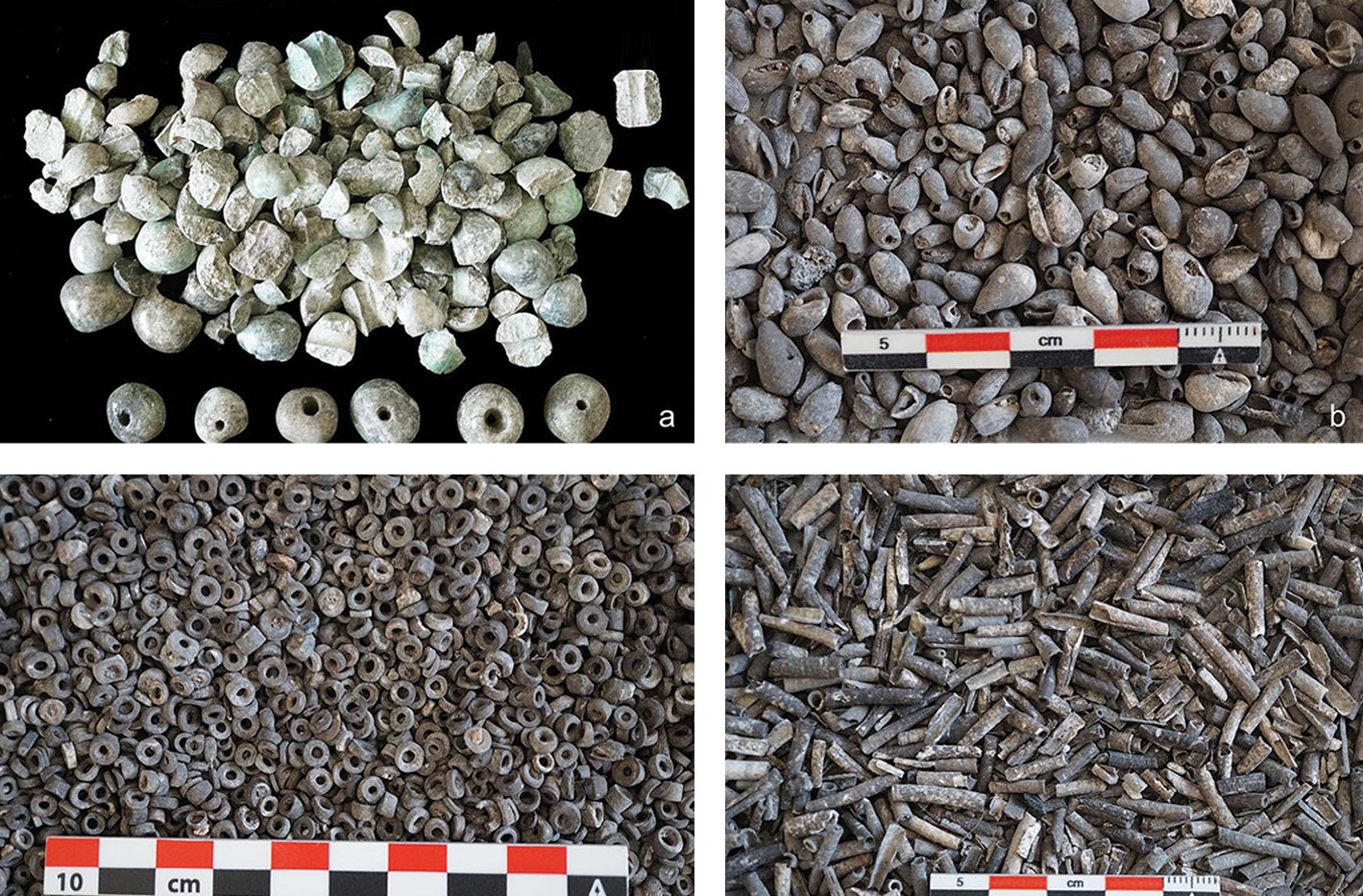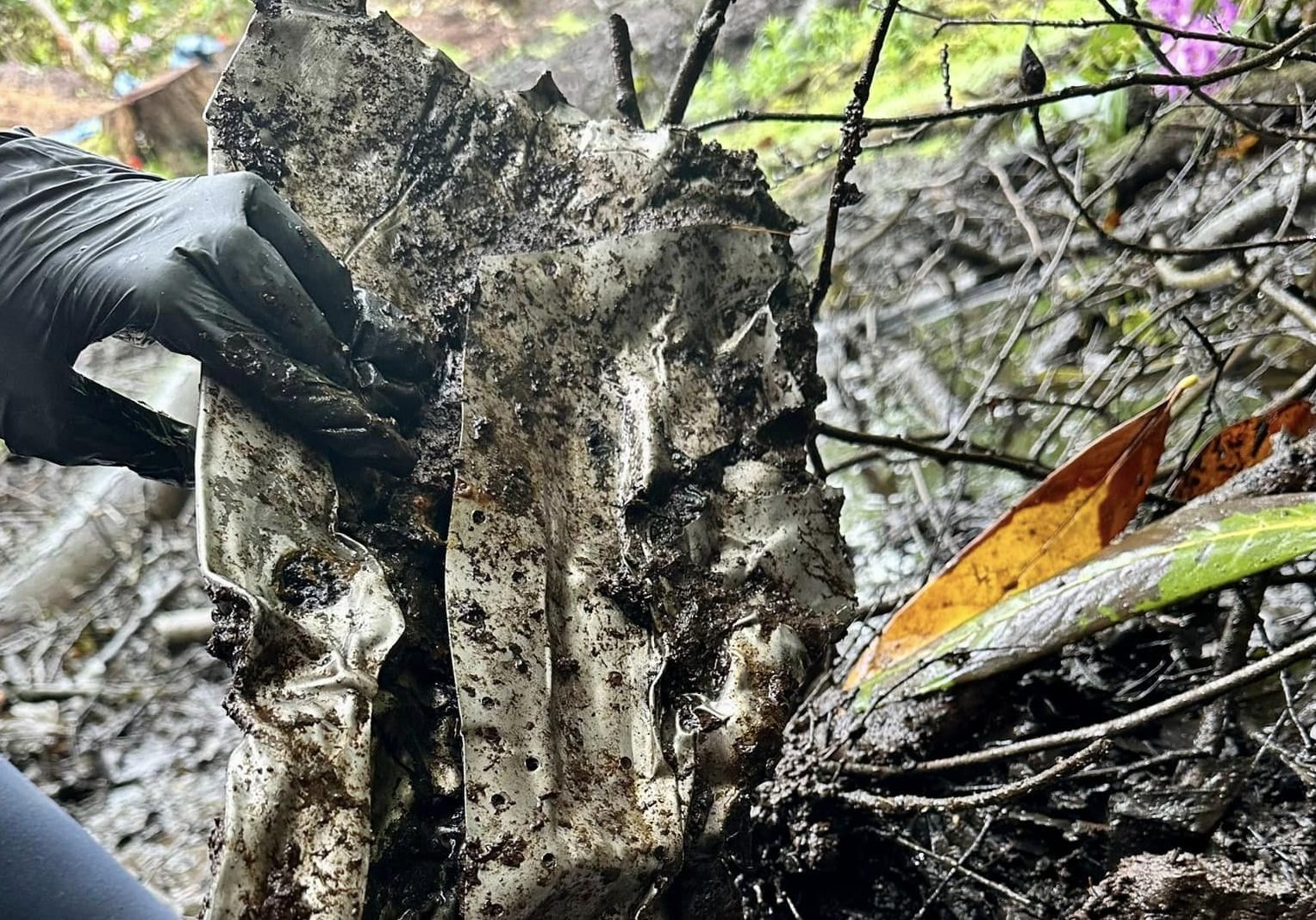Archaeology
Human remains among thousands of ornaments in Maya pyramid

Archaeologists have discovered human remains among thousands of jade and marine ornaments during excavations of a pyramid at K’anwitznal.
K’anwitznal, known today as Ucanal, is a Maya polity near the source of the Belize River in the Petén department of present-day northern Guatemala. The site consists of 114 structures in the main city precinct, where several pyramids and palaces are located.
Excavations within one of the pyramids have uncovered a deposit containing burnt human remains among thousands of jade and marine shell ornaments.
The human remains date from the 9th century AD and suggest a ritual desecration and burning of a Maya ruler. According to a paper published in the journal Antiquity, the burning event was likely a dramatic public display of a political regime change.
Image Credit : Antiquity
Contemporary sources indicate that the early 9th century saw a period of political upheaval in the Maya Lowlands, however, K’anwitznal grew in political power beginning with the reign of a new leader, Papmalil, who may have been a foreigner.
“Much epigraphic and archaeological research in the Maya area has focused on the collapse of Classic Maya polities at the end of the eighth and the beginning of the ninth century AD”, states lead author of the research, Dr Christina T. Halperin from the University of Montreal. “However, key tipping points in history are rarely found directly in the archaeological record”.
A radiocarbon analyses suggests that the burning event took place after the death of the ruler between AD 773 to 881, with the remains deposited in the construction of a new phase of a temple-pyramid. This was likely intended as an act to reject a Late Classic Maya dynasty and install a new era of a political order that overlapped in time with Papmalil’s takeover.
Image Credit : Antiquity
“The fire-burning event itself and the reign of Papmalil helped usher in new forms of monumental imagery that emphasised horizontal political ties and fundamental changes in the social structure of society,” states Dr Halperin. “In this sense, it was not just an end of an era, but a pivot point around which the K’anwitznal polity, and the Maya of the southern Lowlands in general, transformed themselves anew.”
Header Image Credit : Antiquity
Sources : A pivot point in Maya history: fire-burning event at K’anwitznal (Ucanal) and the making of a new era of political rule – Christina T. Halperin, Marta Lidia Perea Carrera, Katherine A. Miller Wolf & Jean-Baptiste LeMoine
https://doi.org/10.15184/aqy.2024.38
This content was originally published on www.heritagedaily.com – © 2023 – HeritageDaily
Archaeology
Archaeologists search crash site of WWII B-17 for lost pilot

Archaeologists from Cotswold Archaeology are excavating the crash site of a WWII B-17 Flying Fortress in an English woodland.
The B-17 Flying Fortress is an American four-engine heavy bomber aircraft developed in the 1930s for the United States Army Air Corps (USAAC).
The bomber was mainly used in the European theatre for daylight strategic bombing, complimenting the RAF Bomber Command’s night bombers in attacking German industrial, military and civilian targets.
Cotswold Archaeology have been tasked by the Defense POW / MIA Accounting Agency to search the crash site for the remains of the pilot, who died when the B-17 crashed following a system failure in 1944.
Image Credit : Cotswold Archaeology
At the time, the plane was carrying a payload of 12,000lbs of Torpex, an explosive comprised of 42% RDX, 40% TNT, and 18% powdered aluminium. Torpex was mainly used for the Upkeep, Tallboy and Grand Slam bombs, as well as underwater munitions.
The pilot was declared MIA when the plane exploded into an inferno, however, using modern archaeological techniques, the researchers plan to systematically excavate and sieve the waterlogged crash site to recover plane ID numbers, personal effects, and any surviving human remains.
It is the hope of the excavation team members that they will be able to recover the pilot’s remains and return him to the United States for burial with full military honours.
The Defense POW/MIA Accounting Agency (DPAA) is an agency within the U.S. Department of Defense whose mission is to recover unaccounted Department of Defense personnel listed as prisoners of war (POW) or missing in action (MIA) from designated past conflicts.
Header Image Credit : Cotswold Archaeology
Sources : Cotswold Archaeology
This content was originally published on www.heritagedaily.com – © 2023 – HeritageDaily
Archaeology
Roman Era tomb found guarded by carved bull heads
Archaeologists excavating at the ancient Tharsa necropolis have uncovered a Roman Era tomb guarded by two carved bull heads.
Tharsa is located near Kuyulu village in southeastern Turkey along the Adıyaman-Şanlıurfa Highway.
The site was situated on a major Roman highway from Doliche to Samosata, which today consists of a two settlement mounds and a large necropolis that dates from the 3rd century to the Byzantine period.
Excavations first commenced in 2021 which discovered a collection of Turuş Rock Tombs, a type of tomb construction carved directly into the bedrock.
In the latest season, archaeologists have excavated another Turuş Rock Tomb, however, this example was found to have two carved bull heads which is decorated with garlands and rosettes between the horns.
Bull heads, known as Bucranium, were a form of carved decoration commonly used in Classical architecture. In Ancient Rome, bucrania were often used on the friezes of temples in the Doric order of architecture, later influencing the architecture of buildings from the Renaissance, Baroque, and Neoclassical periods.
Architectural examples of bucrania are representations of the practice of displaying garlanded, sacrificial oxen, whose heads were displayed on the temple walls.
Like similar Turuş Rock Tombs, the bull heads are carved directly into the bedrock, guarding a dozen rock cut steps descending into the burial chamber which has three arched niches known as acrosolia.
Mustafa Çelik, Deputy Director of Adıyaman Museum, said, “Tharsa Ancient City consists of 3 main archaeological areas: Big Mound, Small Mound and Necropolis Area. We started excavations in the necropolis area in 2024. We added 2 more rock tombs to the rock tombs we had previously uncovered. One of them is the rock tomb we identified today.”
Header Image Credit : Adıyaman Museum
Sources : Adıyaman Museum
This content was originally published on www.heritagedaily.com – © 2023 – HeritageDaily
-

 Ghosts2 years ago
Ghosts2 years agoZozo: The Ouija Board Demon
-

 Space2 years ago
Space2 years agoScientists claim to have found the answer what existed before the Universe
-

 Ghosts2 years ago
Ghosts2 years agoOld Coot of Mount Greylock
-
Archaeology1 year ago
New discoveries at Ekʼ Balam during conservation works
-

 General3 years ago
General3 years agoUC San Francisco engaging in horrifying experiments, organ harvesting of live babies in the name of “science”
